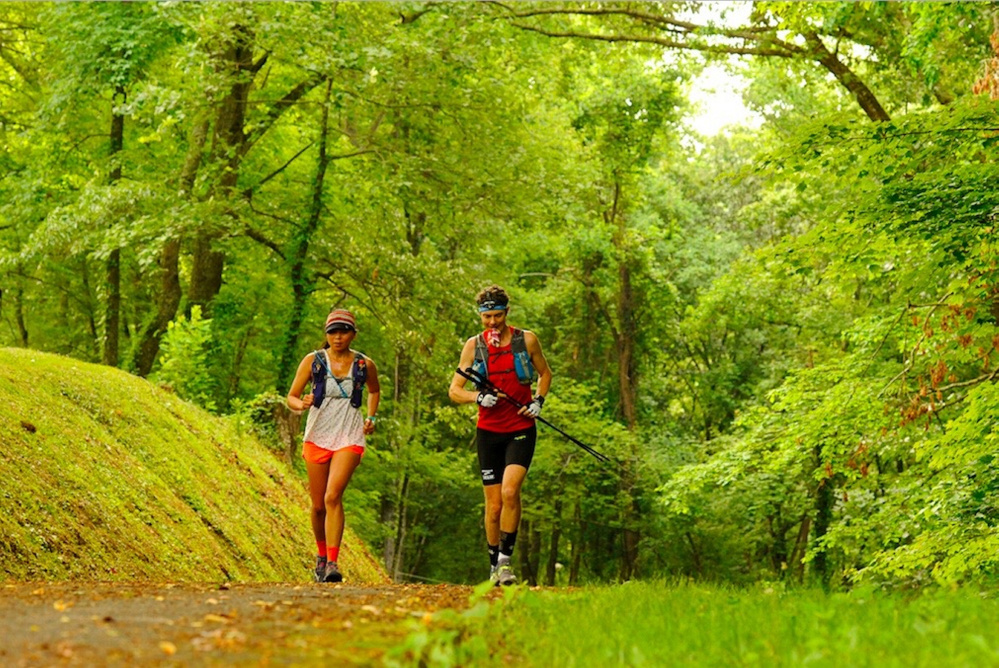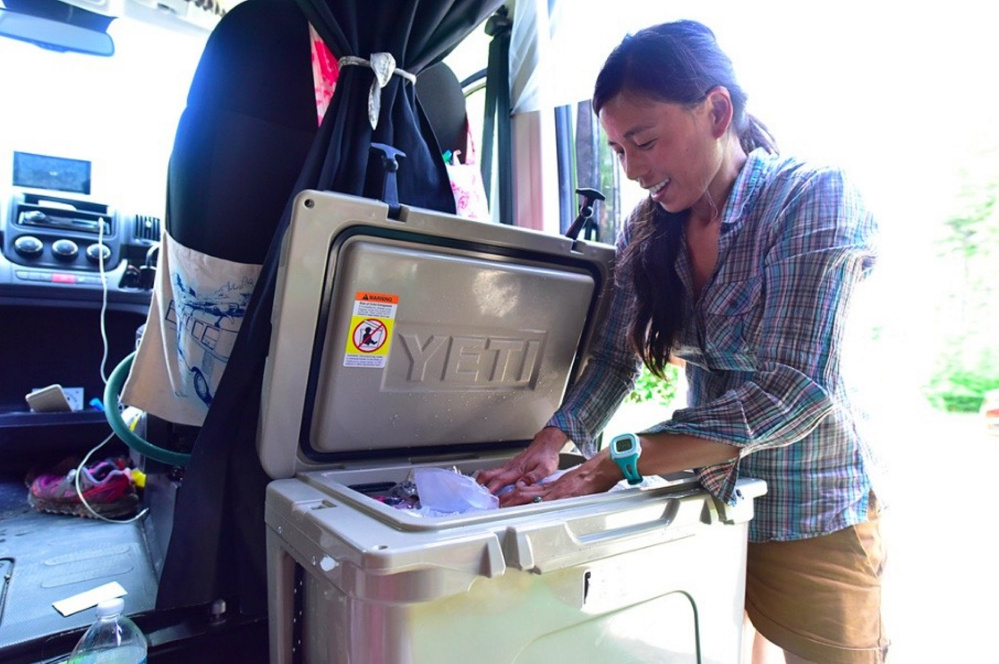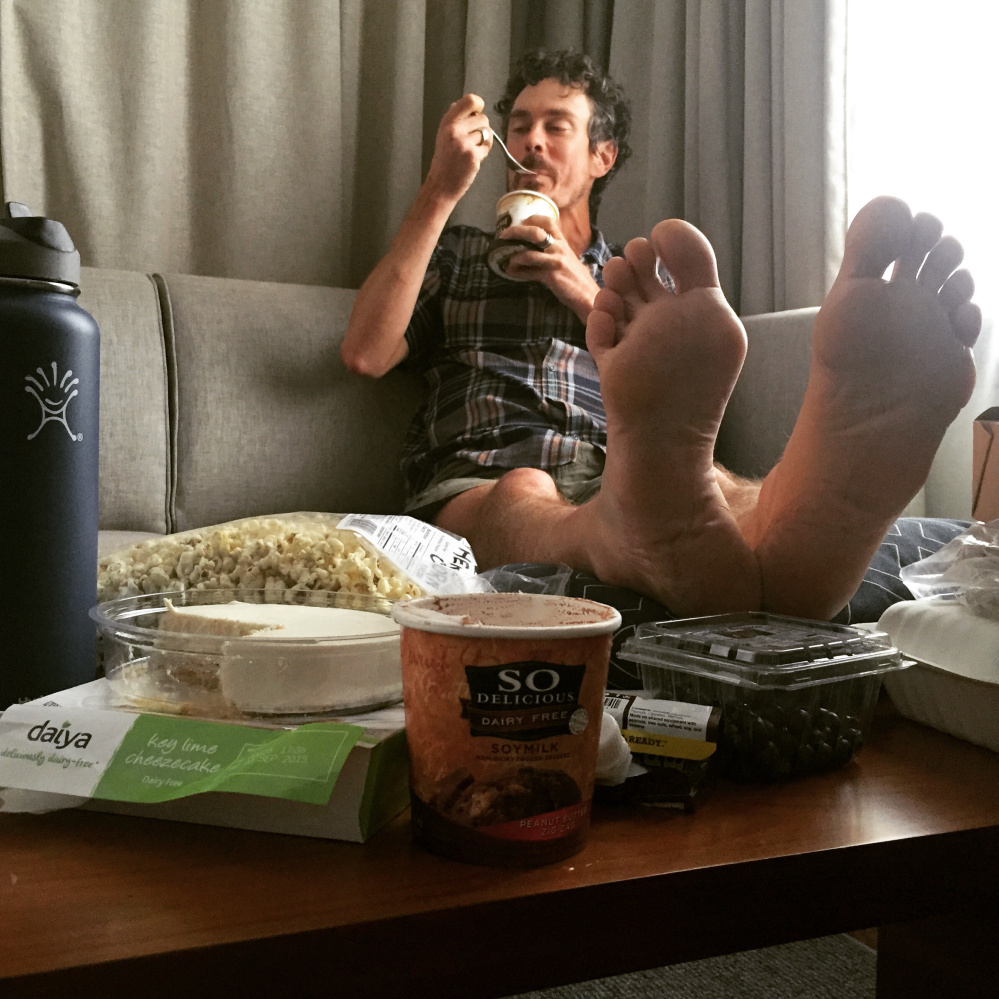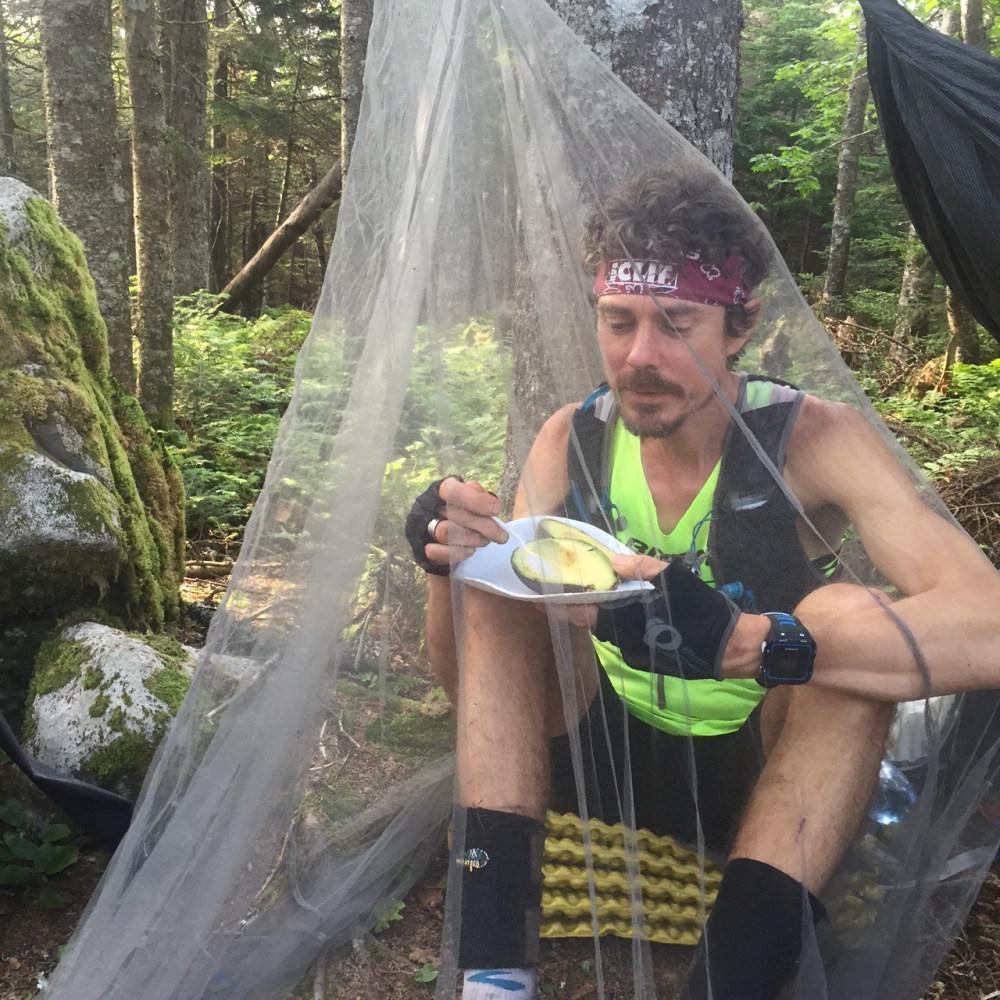When ultramarathoner Scott Jurek reached Mount Katahdin in July and completed the Appalachian Trail in 46 days, eight hours and seven minutes, he not only beat the previous speed record by three hours, but he did so while eating all vegan food.
Here in Maine the coverage of his athletic feat only briefly mentioned the plant-based diet that the author of the New York Times best-seller “Eat and Run: My Unlikely Journey to Ultramarathon Greatness” follows. Worse still for vegans and his fans, the news turned all too quickly from his record-shattering accomplishment to the citations Baxter State Park issued to him for drinking alcohol (Champagne at the summit), littering and hiking, in his case running, with too large a group. (Park rules limit groups to 12).
Ultimately, Jurek who lives in Boulder, Colorado, paid a $500 fine for consuming alcohol in the park, while the charges of having too many people at the summit (mostly fans and onlookers) and for spraying Champagne on the park’s rocks (the source of the litter citation) were dropped.
After these headlines disappeared, we still knew little about what Jurek ate while on the trail and during his short post-hike visit to Portland. I decided to find out.
It took me a few weeks to track him down, but I finally caught up with the busy celebrity on an unreliable cellphone connection, as he and his wife, Jenny Jurek, drove through the Nevada desert headed west to Reno.
“On the AT, we tried to bump up the fat calories,” Jurek told me between call drops. “When you’re only able to eat in 15 minutes, the way to get more calories in is to look at the fat intake.”
Jurek aimed to eat 6,000-plus plant-based calories each day while on the trail. To do so, he needed to consume 100 calories every 30 minutes, much of it in carbohydrate-rich sports gels and energy chews. Breakfast, lunch and dinner were real meals consumed off the trail, although even those often lasted no more than 15 minutes.
Each day, he met up two to three times with the support van Jenny and sometimes a crew of other elite endurance athletes drove to access points along the trail. They kept him supplied with food and beverages.
During the grueling final week in Maine and New Hampshire, he said he slept for an hour or so around midnight (in the van) and another hour or so alongside the trail (covered in bug netting) later in the day. That schedule put Jurek into hard-core sleep deprivation.
“I thought breaking the record was gone after I lost ground in New Hampshire,” Jurek said. “What surprised me is how strong the human body and mind are. Just when I thought I didn’t have the strength or energy to go on, I somehow accessed it.”
EATING ON THE RUN
At home, Jurak’s meals revolve around whole foods, such as beans, grains, fruits and vegetables. Yet out on the AT, he relied more on packaged sports foods, ready-made meals and meat substitutes.
Since he finds the sweetness of sport gels and energy chews cloying after a few hours, Jurek also packed savory snacks such as frozen burritos and sweet potato cubes tossed with salt and olive oil to eat every half hour while running.
He told Bon Appétit he can “eat a burrito at seven- or eight-minute per mile pace.” When I asked him about this, Jurek said it took practice to figure out how to eat solid food as he runs.
“At an eight-minute pace,” Jurek explained, “you have to breathe through your nose and take a few sips of water between bites.”
Clif Bar recently turned to Jurek and other elite endurance athletes before launching the Organic Energy Food line of squeezable sport products. The line includes two savory flavors – sweet potato with sea salt and pizza margherita. The vegan pureed meals are made with minimal ingredients and packaged in the same pouches used for squeezable baby food.
Jurek consumed many of these pouches on the AT. (Jenny sorted and recycled all the wrappers and food packaging after the trip.) In addition to the sports gels and savory foods, Jurek said he also ate a lot of fruit on the trail, such as bananas, kiwis, orange slices and watermelon.
When he stopped for a meal, his goal was to consume the most calorically dense food in the least amount of time. Typically, he’d wake around 5:30 a.m., drink a coconut latte and eat a bowl of cold oatmeal (prepared the night before) and one of the Clif Bar pouches. Then he’d hit the trail.
A second breakfast came when he met up with Jenny later in the morning, and often included home fries from a local diner; toast with coconut butter, salt and brewer’s yeast; vegan yogurt; or a fruit and protein smoothie. Lunch was typically sandwiches, usually around noon, but dinner wasn’t until 11 p.m. or later. At the normal dinner hour, he’d eat another sandwich.
For the late night meal, Jenny made him pasta, coconut curry stir fries and veggie burgers. If she could find a small-town pizza parlor willing to make a meat- and cheese-free pizza, she’d order one and add vegan cheese.
“Down in the South, it was difficult to find vegan options but we came prepared and drove out with a van full of plant-based proteins, nondairy milks and other snacks,” Jenny told me. “Most of the towns I drove through were really small, but occasionally I’d come to a bigger town where I could resupply on some essentials.”
Jurek said he often downed an 800-calorie pint of dairy-free ice cream after dinner. “It was all melted by the time I got to it,” Jurek said. “So I drank it as a shake.”
TRAIL MAGIC
As he made his way along the trail, fans hiked in to bring him everything from vegan cinnamon rolls and avocado maki to fresh fruit and vegetarian meat substitutes.
“One man hiked miles to bring me a pizza,” Jurek said. “I did accept all this trail magic.”
Such food gifts were a particular help to Jenny, who said, “This one family in Pennsylvania brought me five bags of vegan groceries. It was insane! We were so fortunate to have that type of support.”
The northernmost end of the almost 2,200-mile trail is considered by many to be the most challenging, and the 100 Mile Wilderness in Maine one of the most isolated sections. To cover at least 50 miles in a day, Jurek had to spend more than 20 hours on the trail during much of this final stretch. Using a high-quality headlamp, he found being in the woods after dark “gave me a different perspective of the night. I heard and smelled different things.”
After the celebration in Baxter State Park, the Jureks headed to Portland for a stay at the posh Press Hotel. That first night, Jurek posted a photo of himself in his hotel room surrounded by high-calorie vegan snack foods from the local Whole Foods Market. The healthy eater could afford to consume some junk food since he lost close to 20 pounds on the trail and was eager to gain it back (which he did within a month).
After getting some much-needed rest, the Jureks explored Portland and ate at Local Sprouts, Boda, Flatbread and Bam Bam Bakery.
While he was the one breaking records on the AT, Jurek said “friends thought Jenny deserved a couple nights in the hotel” and paid for the room.
Jurek said he wouldn’t have beaten the record without her help. Runner’s World reporter Kit Fox was at the summit of Katahdin on that sunny Sunday in July when Jurek completed the AT. Fox wrote of Jenny:
“She served as his cook, his doctor, his driver, and his psychologist. For much of the trail she crewed him alone. It was her birthday (on that) Sunday. Jurek led the crowd in a rendition of ‘Happy Birthday’ minutes after reaching the summit.”
In spite of the citations by Baxter State Park management, “We have a lot of great memories of Maine and the people there and the food in Portland,” Jurek told me.
Once he was home and the adventure (and the post-adventure junk food binge) was behind him, “I craved a lot of greens and salads,” Jurek said, “which are too hard to get down on the trail.”
Avery Yale Kamila is a freelance food writer who lives in Portland. She can be reached at:
avery.kamila@gmail.com Twitter: AveryYaleKamila
Send questions/comments to the editors.






Comments are no longer available on this story